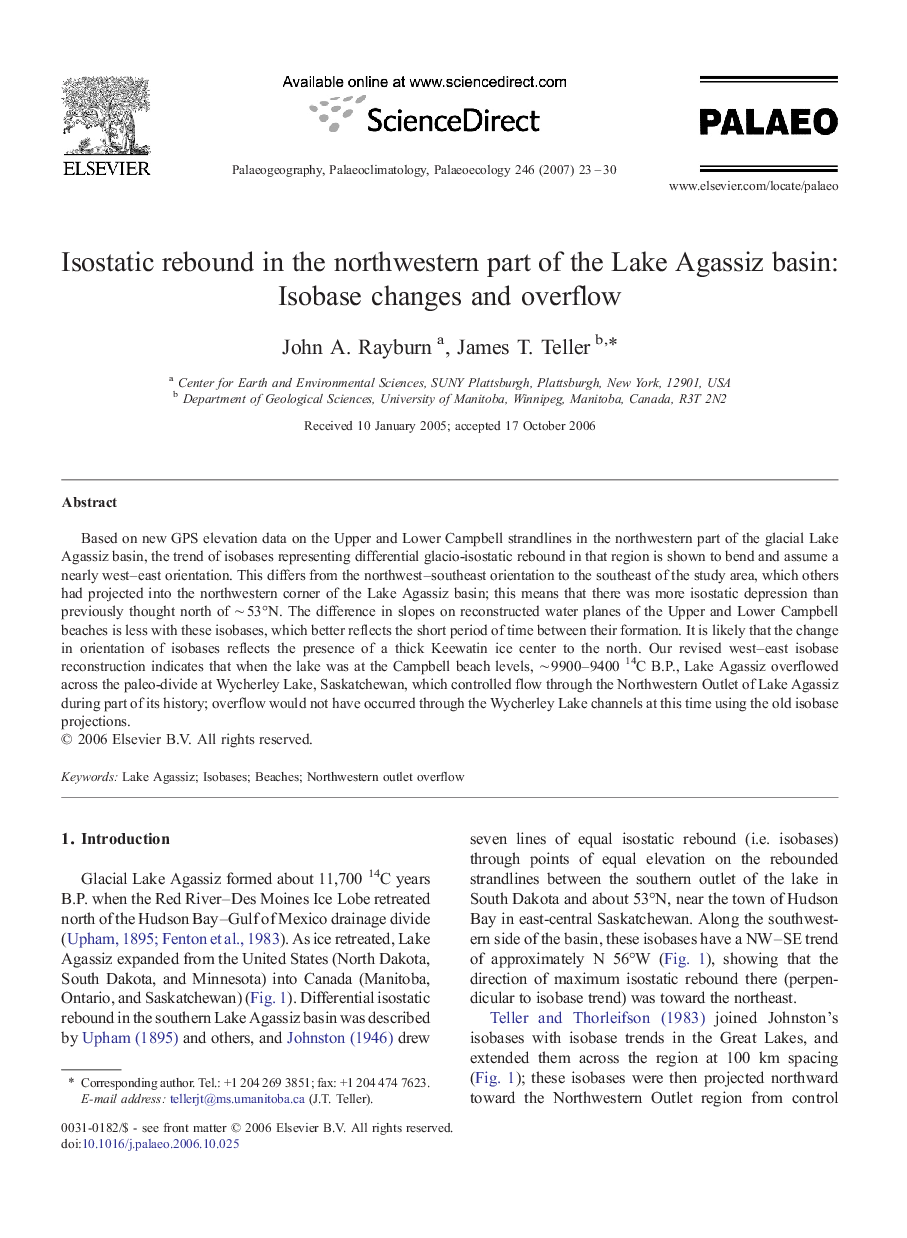| Article ID | Journal | Published Year | Pages | File Type |
|---|---|---|---|---|
| 4469152 | Palaeogeography, Palaeoclimatology, Palaeoecology | 2007 | 8 Pages |
Based on new GPS elevation data on the Upper and Lower Campbell strandlines in the northwestern part of the glacial Lake Agassiz basin, the trend of isobases representing differential glacio-isostatic rebound in that region is shown to bend and assume a nearly west–east orientation. This differs from the northwest–southeast orientation to the southeast of the study area, which others had projected into the northwestern corner of the Lake Agassiz basin; this means that there was more isostatic depression than previously thought north of ∼ 53°N. The difference in slopes on reconstructed water planes of the Upper and Lower Campbell beaches is less with these isobases, which better reflects the short period of time between their formation. It is likely that the change in orientation of isobases reflects the presence of a thick Keewatin ice center to the north. Our revised west–east isobase reconstruction indicates that when the lake was at the Campbell beach levels, ∼ 9900–9400 14C B.P., Lake Agassiz overflowed across the paleo-divide at Wycherley Lake, Saskatchewan, which controlled flow through the Northwestern Outlet of Lake Agassiz during part of its history; overflow would not have occurred through the Wycherley Lake channels at this time using the old isobase projections.
